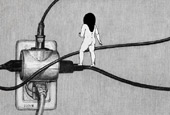Two Korean animated short films have recently won best prizes at world-leading international animation festivals. Joung Yumi’s “Love Games” and Jeong Dahee’s “Man on the Chair” won the top prizes for short films at the Animafest Zagreb 2014 and at the Annecy International Animated Film Festival, respectively, earlier in June this year.
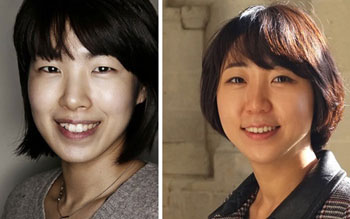 “Love Games” received the Grand Prix in the short film category at the 24th Animafest Zagreb 2014, which took place from June 3 to 8 in the Croatian capital. This is the second oldest animation film festival worldwide and is known as one of the four leading international animation festivals, along with the Annecy International Animated Film Festival in France, the Hiroshima International Animation Festival in Japan and the Ottawa International Animation Festival in Canada.
“Love Games” received the Grand Prix in the short film category at the 24th Animafest Zagreb 2014, which took place from June 3 to 8 in the Croatian capital. This is the second oldest animation film festival worldwide and is known as one of the four leading international animation festivals, along with the Annecy International Animated Film Festival in France, the Hiroshima International Animation Festival in Japan and the Ottawa International Animation Festival in Canada.
Animated short films from Korea have been invited to the festival since 2000, but this is the first time one received the top prize. "Love Games" has now been invited to 60 international film festivals, including the Berlin International Film Festival in Germany. The short cartoon has been seen by European viewers on Arte TV, which broadcast it across France and Germany.
"Love Games” shows a pair of adults playing at childish games, a pair of adults that is still not quite fully mature. They draw a square, take off their shoes, step inside the square and begin to play various games. They pretend to drink a cup of tea filled with sand. They try to find and eat cookies blindfolded. They even play doctor as if they're children. The two express their emotions when playing games together and even show tears. Various emotional changes are depicted with Joung's detailed pencil drawings.
In regard to "Love Games,” the judges highlighted their enjoyment of the deep emotions, calm and well-paced rhythm and the simplicity of its design, subversively using children’s games to express the rules of an adult relationship, said the festival.
Earlier this year, Joung Yumi, creator of "Love Games,” also received the top prize in the New Horizons category at the 2014 Bologna Ragazzi Awards with her graphic novel "Dust Kid.”
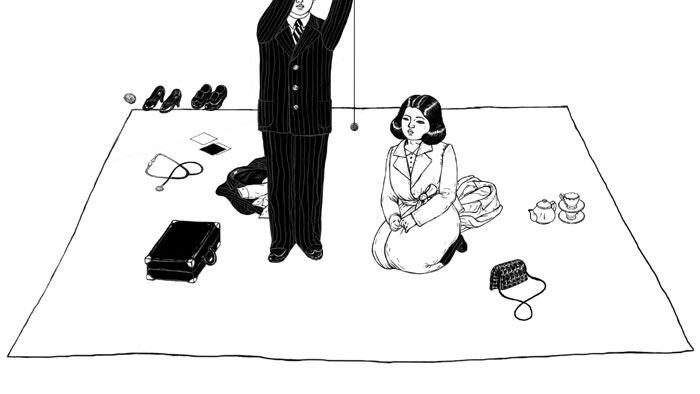
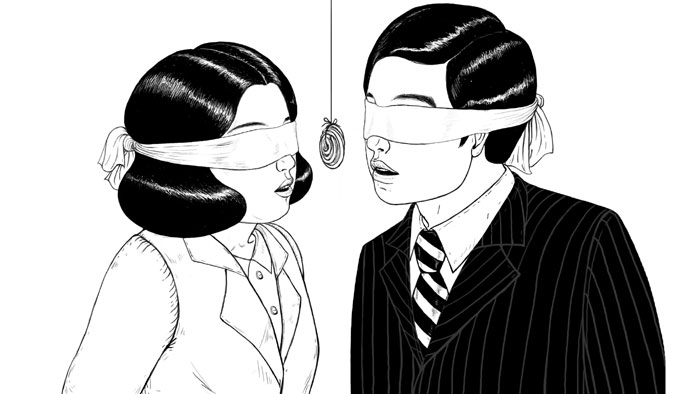
Meanwhile, Jeong Dahee, a new Korean animator, received the top prize in the short films category at the Annecy International Animated Film Festival 2014, held from June 9 to 14 this year, for her “Man on the Chair.” This short was selected for the Directors' Fortnight at the Cannes Film Festival 2014 earlier this year in May.
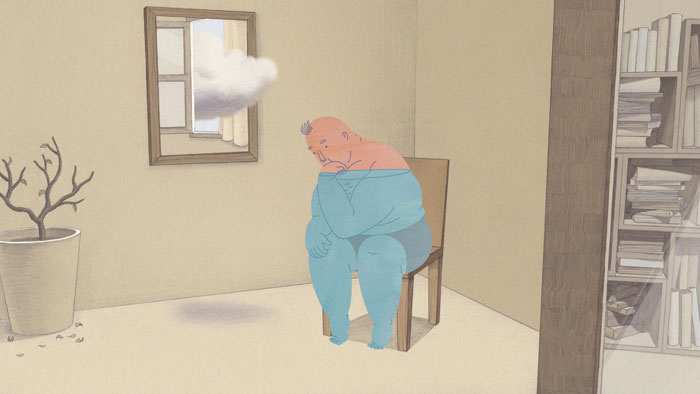
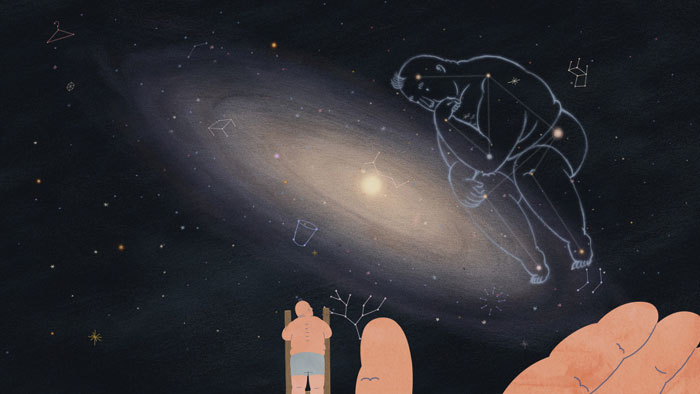
Jeong Dahee, creator of “Man on the Chair,” said she wanted to make an animation about the endless questions about existence.
This is the first Korean animated short film to win the Annecy International Animated Film Festival. Prior to “Man on the Chair,” Jeong was under the spotlight for her previous work, such as "Le temps de l'abre" ("The Time of the Tree," unofficial translation), having won prizes at both Korean and international animation film award ceremonies, including the Indie-AniFEST 2014 in Korea.
Korea.net recently interviewed Jeong Dahee, asking her about her creations and her plans for the future.
To view a trailer for "Man on the Chair,” please visit http://vimeo.com/93009757
To read Korea.net's interview with Joung Yumi, click http://www.korea.net/NewsFocus/People/view?articleId=118573
By Yoon Sojung
Korea.net Staff Writer
arete@korea.kr


(From left) Joung Yumi is the creator of 'Love Games,' and Jeong Dahee writes 'Man on the Chair.' (images courtesy of Culture Platform, Jeong Dahee)
Animated short films from Korea have been invited to the festival since 2000, but this is the first time one received the top prize. "Love Games" has now been invited to 60 international film festivals, including the Berlin International Film Festival in Germany. The short cartoon has been seen by European viewers on Arte TV, which broadcast it across France and Germany.
"Love Games” shows a pair of adults playing at childish games, a pair of adults that is still not quite fully mature. They draw a square, take off their shoes, step inside the square and begin to play various games. They pretend to drink a cup of tea filled with sand. They try to find and eat cookies blindfolded. They even play doctor as if they're children. The two express their emotions when playing games together and even show tears. Various emotional changes are depicted with Joung's detailed pencil drawings.
In regard to "Love Games,” the judges highlighted their enjoyment of the deep emotions, calm and well-paced rhythm and the simplicity of its design, subversively using children’s games to express the rules of an adult relationship, said the festival.
Earlier this year, Joung Yumi, creator of "Love Games,” also received the top prize in the New Horizons category at the 2014 Bologna Ragazzi Awards with her graphic novel "Dust Kid.”


Animator Joung Yumi depicts the games a couple plays in detailed pencil drawings, comparing them with children’s games, in 'Love Games.' (images courtesy of Culture Platform)
Meanwhile, Jeong Dahee, a new Korean animator, received the top prize in the short films category at the Annecy International Animated Film Festival 2014, held from June 9 to 14 this year, for her “Man on the Chair.” This short was selected for the Directors' Fortnight at the Cannes Film Festival 2014 earlier this year in May.


'Man on the Chair' portrays a man who continues to ask questions about his existence and about the world. (images courtesy of Jeong Dahee)
Jeong Dahee, creator of “Man on the Chair,” said she wanted to make an animation about the endless questions about existence.
This is the first Korean animated short film to win the Annecy International Animated Film Festival. Prior to “Man on the Chair,” Jeong was under the spotlight for her previous work, such as "Le temps de l'abre" ("The Time of the Tree," unofficial translation), having won prizes at both Korean and international animation film award ceremonies, including the Indie-AniFEST 2014 in Korea.
Korea.net recently interviewed Jeong Dahee, asking her about her creations and her plans for the future.
- How did you feel when you received the top prize in the short films category at the Annecy International Animated Film Festival?
The festival committee didn't give me any clue about the award in advance, so I was really surprised when the title of my work was announced as winner of the top prize. This is my first work since my graduation work. This is also the first time my work has been introduced at the Annecy festival. I really didn't expect it at all. After realizing I won, I thought this is the luckiest I've been in my whole life. My heart was filled with joy.
-The story of “Man on the Chair“ is quite philosophical, as the main character keeps wondering about existence and his thoughts develop from there. Does this artwork target children or adults?
This work does not target a specific age group. Like the man in “Man on the Chair,” I was always curious and always asked questions like, "Where did I come from?” “Where am I?” and, “What is the universe?” I believe these questions can never be answered, not even when you're older. As anyone can ponder these fundamental questions about existence, I hope my drawings can give my readers some food for thought. These days, people are most familiar with TV or theater, with animation only targeting children. I hope that these animations don't only target one special age group. Also, I hope that a number of other shorts, focusing on a variety of themes, can be made.
- What made you to make this animated short film?
When I graduated from the École Nationale Supérieure des Beaux-arts (ENSAD) in Paris in 2012, I met Ron Dyens, a producer at Sacrebleu Productions and a judge of some of our final graduation projects. Ron was creating animations and films with other directors on the theme of disobedience. Ron proposed that I make an animation which shows that everything is free, under the theme of disobedience. I wanted to talk about the existence of someone who disobeys his Creator by showing a character inside a picture who continues to suspect His existence. This animation is based on a short story I made four years ago.
- Why does the man keep sitting on the chair?
When I studied the history of art, I saw many paintings or sculptures that portray someone thinking while sitting on a chair. One of the best known works of art is "The Thinker” by Auguste Rodin. Over the centuries, many artists have drawn people sitting on chairs, focusing on, "the existence of humanity," all while presenting different answers. So I found the image of a man sitting on a chair to be very interesting. Also, I thought that a chair is an object that makes us stop and fall into deep thought.
- What made you enter the field of animation?
I had an animation class when I was majoring in visual design at university. That's when I made an animated short for the first time, and I found it very interesting. I even thought of becoming an animation director some day. After graduating from university, I got a job at an advertising company. One day, I thought, "I should make my own story.” So I went to France to learn more about animation again. It fascinates me to deal with time as a theme, or as a medium or as the technology behind an artwork.
- What animated movies or books impressed you, if any?
When I was a teenager, I was deeply impressed with "The Dwarf," by Cho Se-hui. When I was in my 20s, I really loved Russian writer Romain Gary's books. After that, I read many books about aesthetics. Some of my favorites are books written by Gaston Bachelard and Maurice Merleau Ponty. As for animations, I love all the works by Georges Schwizgebel. I also love animation produced with a performance or a sculpture or in an installation work, such as "Chaos” and “Ceci est un film,” both by Solweig Von Kleist. More recently, I have been very impressed to see “Le grand ailleurs et le petit ici” made by a Canadian artist Michèle Lemieux.
- What do you want to write about for your next project?
I am planning to make a new short animated work that talks about the meaning of life and living within time. As we live our lives and time moves on, I really think a lot of memories continue to build up. These accumulated memories will leave a mark on us, even though we try to remove them. By simultaneously continuing to accumulate and to remove memories, people can't stop being hopeful, even though they get desperate and disappointed with life. I want to talk about such respect of our lives.
To view a trailer for "Man on the Chair,” please visit http://vimeo.com/93009757
To read Korea.net's interview with Joung Yumi, click http://www.korea.net/NewsFocus/People/view?articleId=118573
By Yoon Sojung
Korea.net Staff Writer
arete@korea.kr
